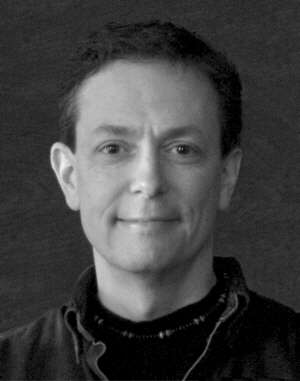Founder, Ted Phelps
Theodore K. Phelps
Mr. Phelps began studies in meditation and Eastern culture in 1970 while working on his degree in psychology at Yale. He has practiced a variety of meditative forms including Zen, Tai Chi, Transcendental Meditation, and Centering Prayer and has taught meditation, both as a full-time profession and as a community service since 1972.
In 1994 he formulated the Natural Meditation method for those who do not want to meditate in religious or cultural settings and founded Natural Meditation Initiatives in 2000 with the self-paced online instruction. He wrote and publishes the book, A Course in Meditation and created the instructional audio CD Natural Meditation: A Guided Launch. He lives near the Berkshires in New York with his wife where he practices various art forms (painting, acting, poetry, music) and is (mostly) retired now from years in organizational information security. He was the first Chief Information Security Officer for the State University of New York for 10 years.
Below the photos, here, is a text that gives a lot of pertinent insight into Mr. Phelps’ meditative background and his particular passion for sharing what he knows. It is his “Personal Note” from his book, A Course in Meditation. You can also read it in the free PDF we offer on this website.
See also TedPhelps.com for visual art and writing.
Author’s Introduction
|
|
My own impulse to remove barriers was with me from the beginning of my teaching, but it took a leap forward in 1994 when I designed the Natural Meditation teaching method. It eliminated barriers of religion, culture, authority, and gender. In 1999 I began writing out the main discourses used in teaching Natural Meditation, and since that was progressing well, I began to wonder, “Could I put an entire course in written form?” For me, that meant wrapping my textbook ideas inside a carefully honed set of instructions that would actually bring them to life. Although my target audience would be self-motivated readers, designing these instructions would be a challenge because natural meditations are an organic process, not just a mental task. The challenge was to show the reader how to be both student and leader. The leader would need new tools to be effective, ones I had never seen attempted in print. It was a worthwhile challenge because a stand-alone course would remove barriers of time, cost, distance, and the occasional need to learn meditation anonymously. I was moving out on a limb, supported only by the conviction that meditation is natural and that the unique meditative condition in mind and body can come alive in a motivated student without the personal attention of a live teacher. I worked through the winter of Y2K and by spring of 2000 was ready to test the Course in its web (computer) format with three nearby students. One was a young woman in college who had wanted to learn to meditate earlier that year but had not yet tried any method. The second was a middle-aged woman who had failed several times, by her own assessment, to learn a couple of different styles of meditation. The third, a middle-aged man, had also unsuccessfully tried several forms over many years. Each agreed to take the course alone and to visit me right away after completing it so we could discuss questions and I could assess what they had learned. Even I was surprised at how well it went. Their experiences were classic, beginners’ experiences, indistinguishable from those of people I have taught in small classes since 1972. The two who had been frustrated with meditation found their pathway to success and built regular daily practices. So, I put the course online and watched as the Internet learned about it and eventually made it one of the top selections (out of tens of thousands) for searches like, “free course in meditation” and “non-religious meditation.” |
|
Although this course teaches a single method, one that I consider an excellent lifelong companion, I recognize how valuable it can be to meditate in various styles. The willingness to explore is an essential component in the pathway I have taken, and without it, I would not have developed the Natural Meditation teaching method. Before becoming a TM teacher, I meditated in the Japanese tradition with a small gathering of fellow Yale students connected with Philip Kapleau’s Zen Center in Rochester, NY. I did a common Zen practice called shikantaza. This pure, open method is, in my terms, an essential form of natural meditation and one I still enjoy many times each week. For several years, I practiced the Christian form called Centering Prayer, formulated by Father Thomas Keating and others. I’ll always be grateful for an afternoon in the winter of 1994 spent in conversation with Father Raphael Simon of St. Joseph’s Abbey in Spencer, Massachusetts, the birthplace of Centering Prayer. We talked of intention, will, and mantras in meditation and contemplative prayer. That talk and Fr. Simon’s book on contemplation, Hammer and Fire, sparked new thought that led to my formulating the Natural Meditation teaching method. My experience in these and other varieties of meditation eventually showed me that meditation methods share an underlying reality. They release a significant, built-in human function—I call it the meditative function—that isn’t widely talked about by their traditions. The mind opens, expands, becomes more fluid and abstract, and the body rests, relaxes, and cleanses itself. This function is naturally occurring and represents the basic foundation or essence of the meditative condition. If the varieties of meditation were drinks at the grocery store, they might be orange juice, grape juice, green tea, coffee, milk, soda, beer, wine, soymilk, and bottled-at-the-source spring water. These drinks differ in flavor, rarity, cost, nutritional value, and culture of origin. Each has a special purpose conveyed by its proteins, vitamins, sugars, minerals, or in the case of bottled water, the absence of anything extra. The pure forms of natural meditation are the bottled spring water. |
|
There has been no finer or more profound influence on my thinking, practice, and teaching, than that of Maharishi Mahesh Yogi, who came to the West in the late 1950s with the sort of ideas that today are the cutting edge of the integral philosophical movement. It was a wide, integral philosophy tightly integrated with a clearly taught transformative practice. His teaching style and clear vision regarding the natural basis of meditation soaked into me years ago. He has a gifted sense for the delicate effects of the teacher’s words on the mind of the beginner and is one of the greatest advocates for the naturalness of the meditative state. The Natural Meditation teaching method takes this naturalness vision one long step further in its own direction and presents meditation in a pure, natural, framework independent of specific cultural ideas and articles of faith. It uses verifiable experience and concepts of psychology and physiology. The Course is like a street-level front office in a skyscraper. It’s a public, barrier-free entry to a vast, complex, layered interior. Even if you have been meditating for a while, the Course can be helpful. This is especially true if you haven’t yet launched meditation as a daily practice, are unsure about your technique, or just need an infusion of fresh air. In case you need something more advanced than the Course,that addresses issues unique to the meditative journey several years out, I am happy there’s a book that does this well and does it in a way that resonates with the theory and purposes of Natural Meditation. It is The Heart of Meditation published in 2002 by Siddha Yoga Foundation and written by Swami Durgananda, or Sally Kempton, a popular American meditation teacher of 35 years. Kempton writes, “If the great question for a beginning meditator is ‘How do I get into it?’ the question for a person who has meditated for a while is ‘How do I hold on to it?’” Here, “hold onto it” means keeping the effects of meditation during the day and bringing them to bear on the way we live. Kempton’s book is a rich, warm, detailed, inch-thick answer. It is based in a particular form of Yoga, but is delivered with an open style well suited for culturally independent practitioners. Zen teacher and author Peter Matthiessen calls it, “A thoughtful, intuitive, and uncommonly well-written book that can only be welcomed by all who follow the way of meditation (no matter the tradition) and especially those—the great majority of us, I suspect—who can benefit from a good jolt of fresh energy and inspiration in our practice.” May you find further peace and health in your meditative journey. Ted Phelps |




